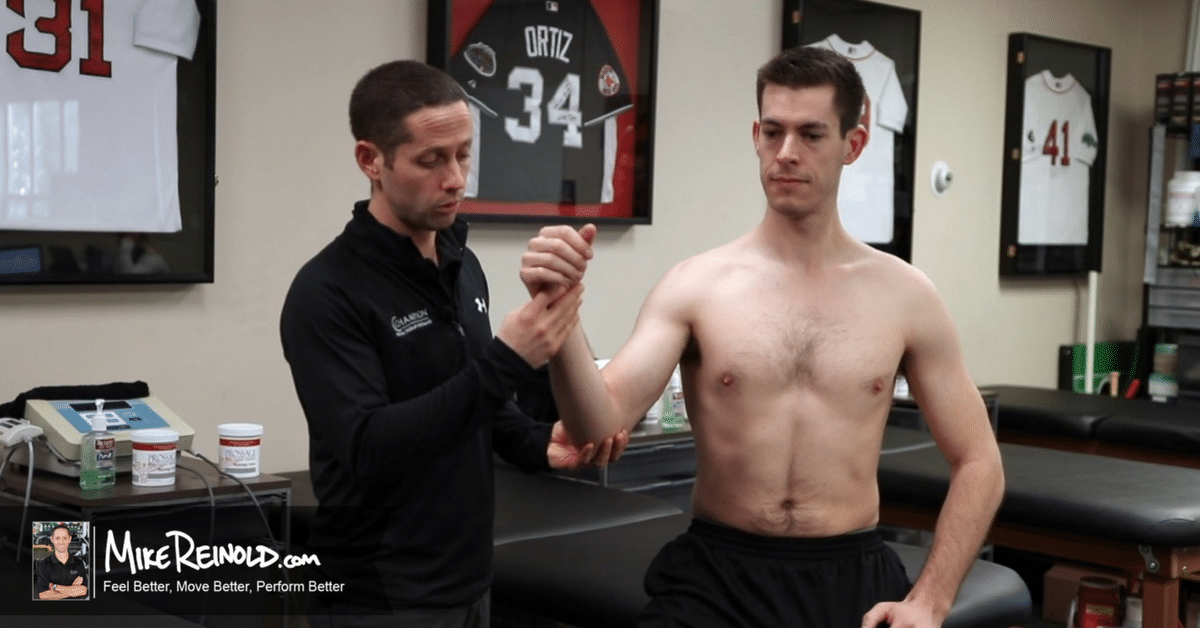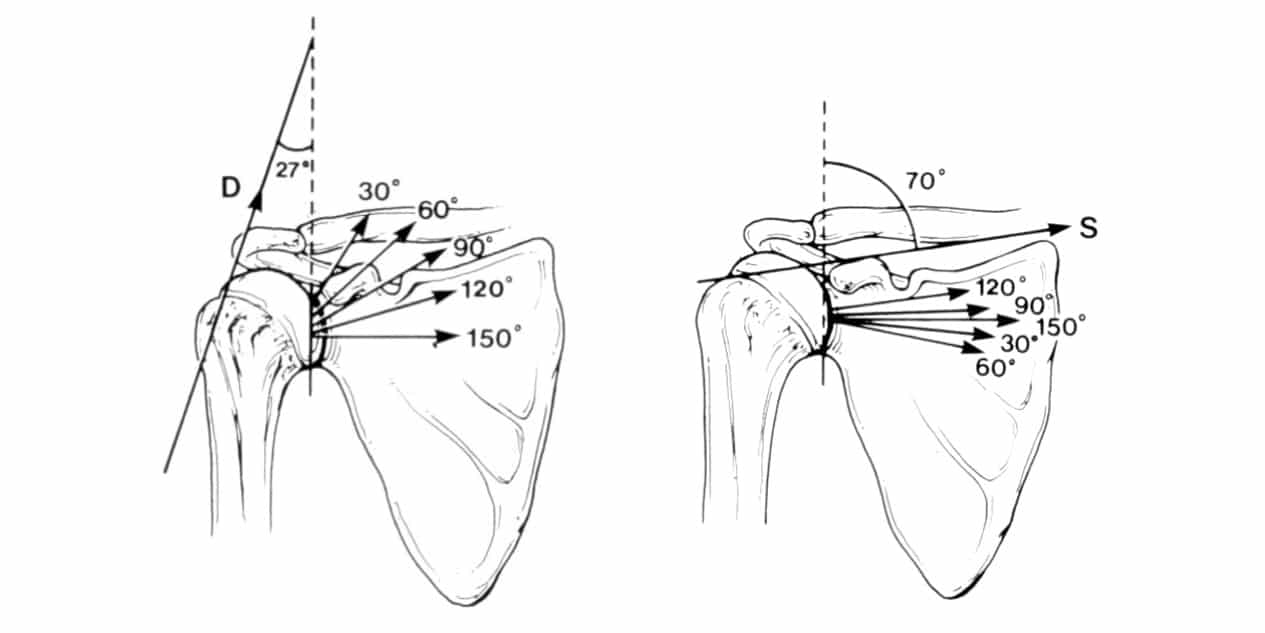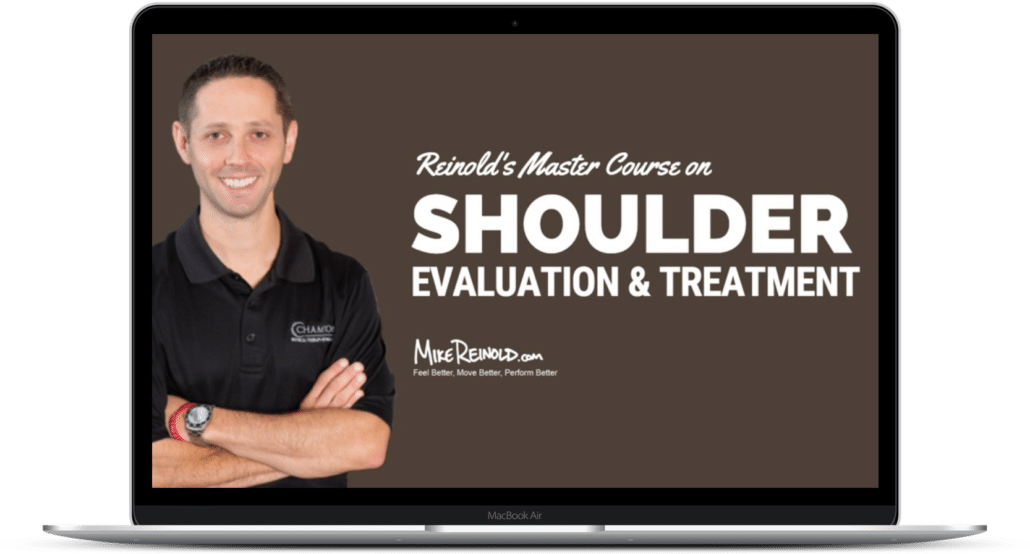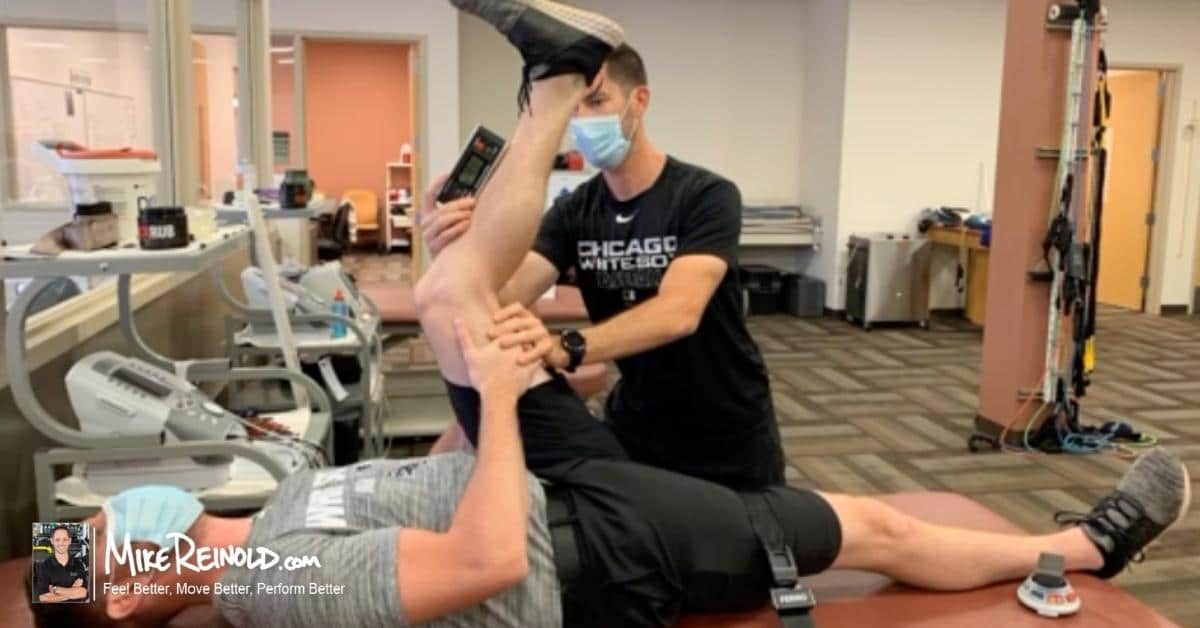Rotator cuff tears are one of the most common injuries we see in orthopedic physical therapy.
During the clinical examination of the shoulder, we want to perform special tests designed to detect a rotator cuff tear.
Below are my 4 favorite special tests for rotator cuff tears that I perform during my clinical examination of the shoulder. These 4 tests do a good job detecting larger tears that are causing dysfunction. If you’re looking for more subtle rotator cuff injuries, I have another article on my shoulder impingement evaluation.
As rotator cuff tears become more common, we are starting to see them in younger and more active patients. In these patients, they often have smaller tears and it is much more difficult to detect with our special tests. These types of patients often present with pain and weakness, and not as much dysfunction as you would see in a traditional older patient with a more degenerative tear.
This is likely because their rotator cuff tear is either small or partial. These are often just isolated to the supraspinatus muscles as well, and their other rotator cuff muscles are functioning well.
As a rotator cuff tear becomes larger, retracted, and more degenerative in nature, the patient’s shoulder dysfunction will become more apparent as it becomes difficult for the rotator cuff as a group to function well.
Shoulder Shrug Sign
The first special test I perform to diagnose a rotator cuff tear is the shoulder shrug sign.
During this test, the key to check if they can actively elevate their arm if you help them past their shrug arc. When the shoulder is positioned below 90 degrees, the line of pull and the force vector of the deltoid muscles is superior. This is often counterbalanced by the line of pull and force vector of the rotator cuff.
In the image below, the left is the line of pull of the deltoid at various shoulder positions. The picture on the right is the supraspinatus. Notice how the deltoid starts to have a similar line of pull as the rotator cuff once the shoulder reaches 90-120 degrees of elevation:
If the rotator cuff is torn, then the deltoid is the dominant muscle and the resultant force vector is more superior.
This is the shrug.
However, one you get the arm overhead, the deltoid is now more in line with the rotator cuff and can help center the humeral head within the glenoid fossa.
So, you want to passively help them get above this position to see if they can elevate towards the upper range of elevation.
There isn’t really any information in the literature regarding this test. It’s not something you’d probably find as a specific test for a rotator cuff tear, but something I have clinically found to be relevant to me.
Shoulder Drop Arm Test
The next rotator cuff tear special test that I perform is the drop arm test. The concept of this test is pretty similar to the shrug sign. You passively elevate the arm and see if they can hold that position without the arm dropping, or shrugging.
If the arm drops or shrugs, then the rotator cuff likely isn’t able to counterbalance the superior line of pull of the deltoid.
The research has shown that the sensitivity of the drop arm test is low to moderate, but specificity is high from 80-100%. This is consistent with most of your clinical examination of the shoulder. You usually have to have a significant tear to start seeing these tests positive.
Rotator Cuff Lag Sign
The rotator cuff lag signs are similar special tests as the drop arm test. Essentially, they are like a drop arm for external rotation of the shoulder instead of elevation.
As rotator cuff tears get larger, they tend to extend from the supraspinatus into the infraspinatus. The lag signs show a difficulty in the external rotators holding the arm against gravity.
The test appears to be specific in the literature with specificity between 88-100% and several studies in the 90% range. Sensitivity has varied in studies, but has shown 45-56% sensitivity to detect full thickness supraspinatus tears, 70% in infraspinatus tears, and 100% in teres minor tears. This makes sense to me as it’s a better test for larger tears extending into the infraspinatus and teres minor.
Lag Sign at 90 Degrees
I also like to perform a variation of the lag sign at 90 degrees of elevation. It is the same test as the traditional lag sign, however, I have found this test to be even more challenging. I have seen patients that had a positive lag sign at 90 degrees of elevation, and a negative lag sign at 20-30 degrees. It’s simply a more challenging position for the cuff.
The research has shown this to have specificity between 70-100%, however varying sensitivity from 20-100%. But again, for the same reasons as the lag sign above.
Special Tests for Rotator Cuff Tears
If you use all four of the above special tests as a cluster, I think you’ll often be able to detect a large full thickness rotator cuff tear during your clinical examination. These tests tend to be more sensitive to larger tears in older and more degenerative patients.
But remember, special tests are just a piece of the puzzle.
Learn Exactly How I Evaluate and Treat the Shoulder
If you are interested in mastering your understanding of the shoulder, I have my acclaiming online program teaching you exactly how I evaluate and treat the shoulder.
The online program takes you through everything you need to become a shoulder expert. You can learn at your own pace in the comfort of your own home. In addition to shoulder impingement, you’ll learn about:
- The evaluation of the shoulder
- Selecting exercises for the shoulder
- Manual resistance and dynamic stabilization drills for the shoulder
- Nonoperative and postoperative rehabilitation
- Rotator cuff injuries
- Shoulder instability
- SLAP lesions
- The stiff shoulder
- Manual therapy for the shoulder
The program offers CEU hours for physical therapists and athletic trainers. Click below to learn more:








